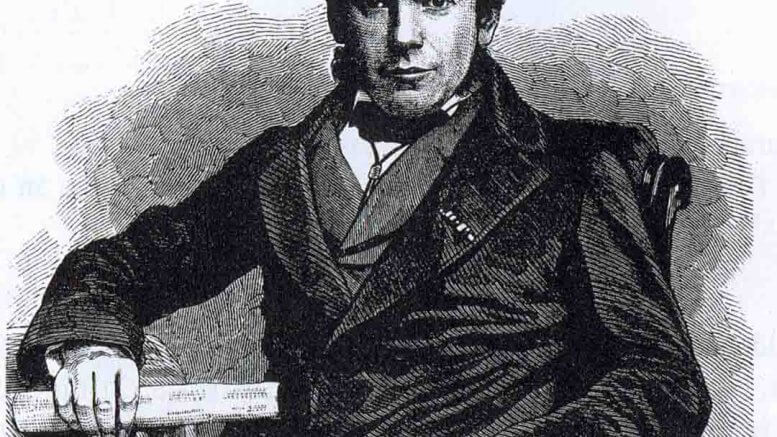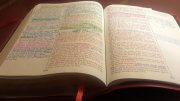Alexander Schick | Patterns of Evidence
Summary: The fascinating account of Constantin von Tischendorf’s discovery of the world’s oldest Bible. Part 1 of a 2-part series. See Part 2 on Patterns of Evidence here.
The grass withers, the flower fades, but the word of our God will stand forever. – Isaiah 40:8 (ESV)
Codex Sinaiticus, the World’s Oldest Complete Bible Manuscript
The Codex Sinaiticus, one of the most precious Bible manuscripts in the world, is available today on the World Wide Web with a few clicks (www.codex-sinaiticus.net/en). Digitizing the ancient parchment manuscript is one of the most extensive and expensive research projects of the Internet age, costing over 5.5 million dollars.
The 1600-year-old Bible manuscript contains large parts of the Old Testament in Greek (Septuagint) and the entire New Testament. The Codex (book) dates from the 4th century AD and ranks next to the Codex Vaticanus (4th century AD) and the Codex Alexandrinus (5th century AD) as one of the three oldest full Bibles (OT and NT) in the world. But only the Codex Sinaiticus can claim to be the oldest completely preserved manuscript of the New Testament! At least three original writers have drawn up this Bible translation in Caesarea Maritima or Egypt.
The ultra-thin parchment was made of calf- or sheepskin. It is estimated that 350 animals had to give their hides for it. A whole cow or goat herd for a single Bible! A writer copying the Bible could rightly say of it, “holy cow!”
The leaves are 38 cm (15 in.) high and 34 cm (13 in.) wide, making them the largest of the Bible manuscripts. It is estimated that the original number of leaves totaled 739 (1,478 pages). Unfortunately, only 411 sheets have been preserved. Each page has four columns (with the exception of books of poetry, such as the Psalms, which have only two columns). Each column normally has 48 lines.
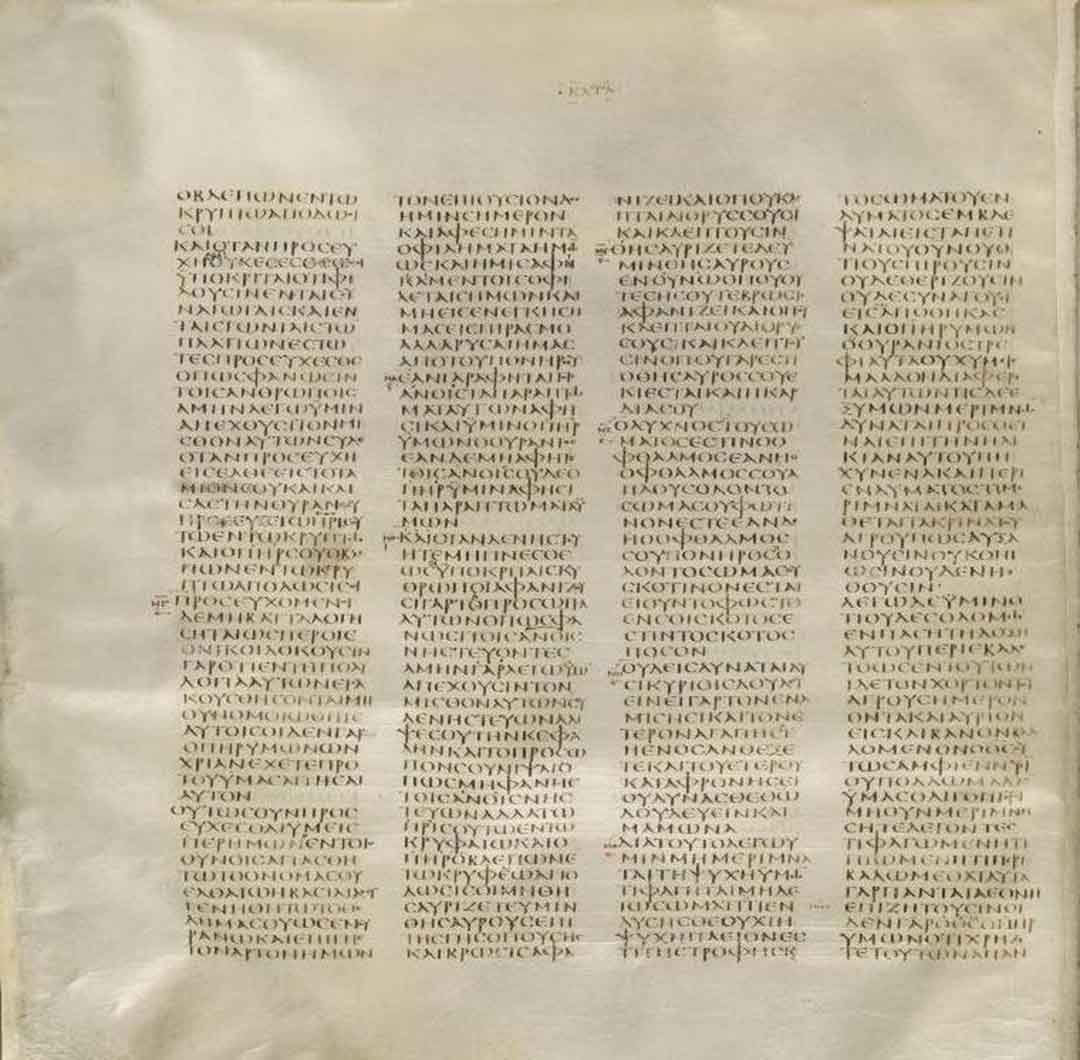
Although the leaves of the Codex are “virtually” united online and are all available together, they are in reality spread over the entire world. The lion’s share of the manuscript (347 sheets) has been in safekeeping at the British Library in London since 1933. It spans most of the Old Testament according to the canon of the Septuagint, including the Apocrypha, as well as the whole New Testament. The number of New Testament books corresponds with our best present Bible editions. Only the arrangement is different; Hebrews falls after 2 Thessalonians, and Acts after Philemon and before James.
In addition, the Codex Sinaiticus also contains the two early Christian writings: The Shepherd of Hermas and the Epistle of Barnabas. These Bible pages were stored in the Czar’s library in St. Petersburg/ Leningrad until 1933, when Stalin sold them to the British for 100,000 pounds. This corresponded to the value of 3 Gutenberg Bibles, or in today’s currency, about 28 million dollars.
The second largest portion (43 sheets) is kept at the Leipzig University Library, and contains parts of 1 Chronicles and 2 Esdras, Esther (complete), Tobit (one side), a part of Jeremiah, and a part of Lamentations.
Parts of 4 sheets are in St. Petersburg, namely fragments of Genesis, Numbers, and Judith, as well as from the Shepherd of Hermas.
Eighteen sheets (partially fragmentary) are kept in Saint Catherine’s Monastery. They contain parts from all five books of Moses, Joshua, Judges, 1 Chronicles, Joshua 1, and the Shepherd of Hermas.
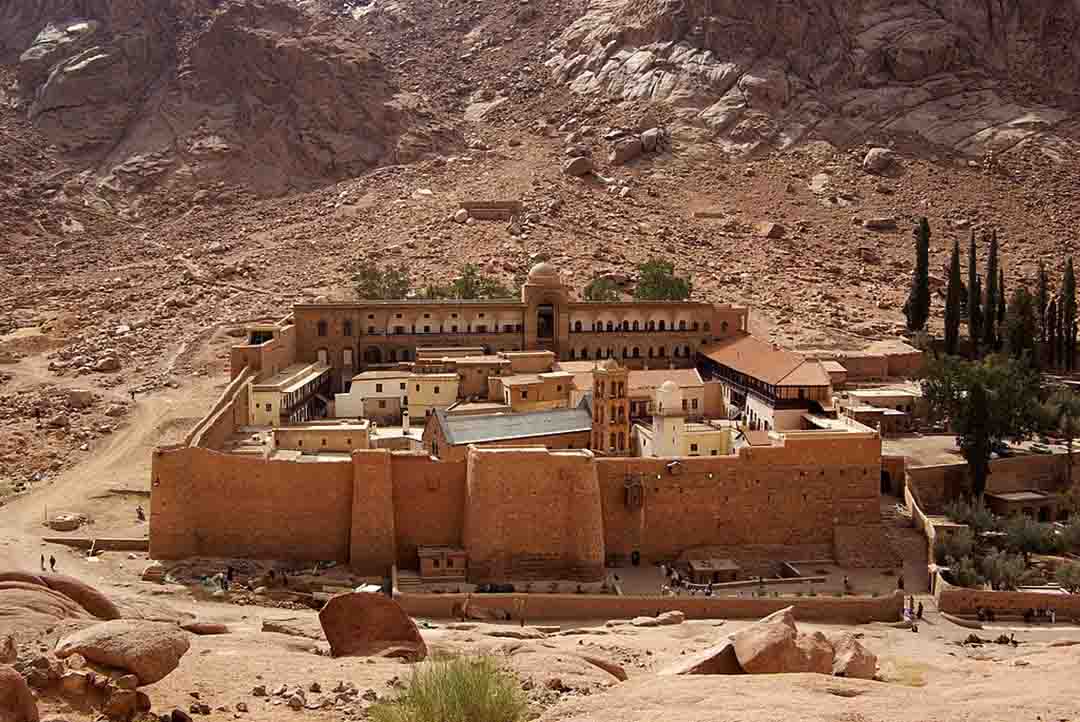
Constantin von Tischendorf
The discovery of these parchment leaves is a true research crime thriller of Bible history, and is inseparably connected with the name Constantin von Tischendorf.
Tischendorf was born over 200 years ago on January 18th, 1815 in Lengenfeld, Vogtland (Saxony, Germany). Even in school, the young boy showed a talent for classical language. He was an outstanding student and was always the best in his class at the University of Leipzig, where he graduated in 1838 with his Ph.D.
While studying theology, Tischendorf, whose mother had shown him the way to the Christian faith, was also faced with liberal theology and violent attacks against the Christian faith. These attacks were partly based on the method of transmission of the New Testament, and it is here that Tischendorf wanted to act because of his excellent knowledge of ancient languages.
It formed in his mind a desire to embark on a search for the oldest copies of the New Testament, in order to evaluate them for a new translation. The textual tradition of the New Testament should therefore be established on firm ground, and the rug pulled out from under the feet of the critics. But why was that necessary?
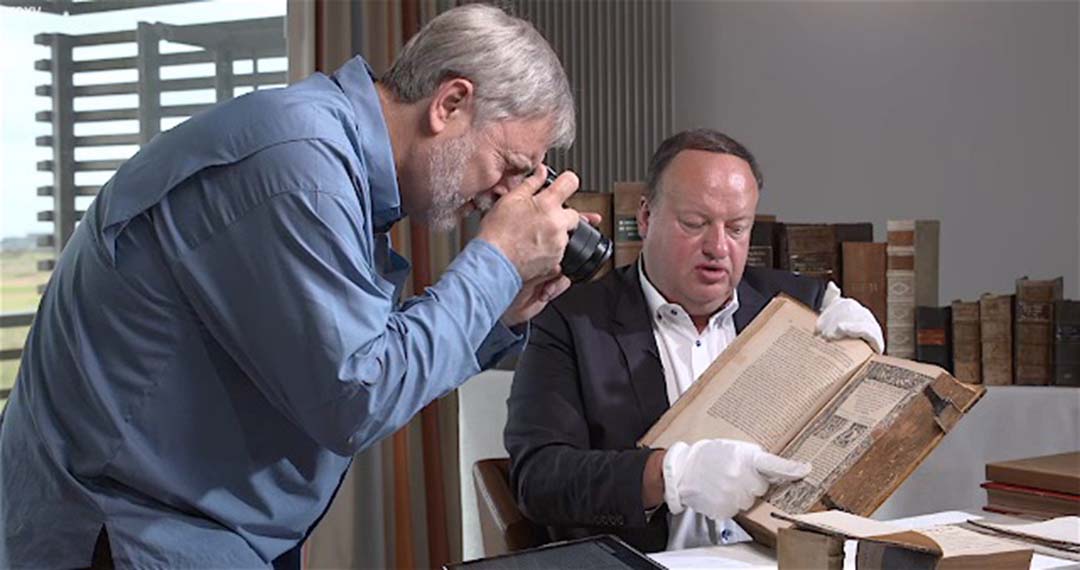
Shortly before Luther’s epochal translation of the New Testament (1522), Erasmus had published for the first time a printed Greco-Latin version of the New Testament (1516), which Luther used as an “original text edition” for his translation at Wartburg. But Erasmus had used very few (7) and very late Greek manuscripts from the 12th to the 15th centuries as the basis of his printing of the New Testament.
These Greek texts from the medieval manuscripts were reprinted again and again in the following decades, and through further revisions were known since 1633 as “Textus Receptus” (the text adopted/received by all).
For centuries, it was the basis for translations of the Bible (including the famous 1611 King James Version or Luther 1545/1912). But this “Textus Receptus” was not old enough for Tischendorf. He wanted older, much older manuscripts as a basis for a new critical edition in Greek, because—in Tischendorf’s point of view—the older the copy is and the closer it is to the date of the Gospels’ composition, the lower the odds that the texts had been falsified. For him, it was clear that in the search for the original text of the New Testament, it was necessary to proceed from the oldest manuscripts, even though great age is also not always a guarantee that it is the best representative text.
So Tischendorf went in 1839/40 on research trips to libraries in southern Germany and Switzerland. Already in the following year (he was 26 years old at the time!), published his first edition of the New Testament in Greek, under the title “Novum Testamentum Graece,” for which he had evaluated the manuscripts available at the time.
Over the course of his short life—Tischendorf died in 1872 at the age of 59—he had plans for 23 other editions of the New Testament in Greek to follow. He concerned himself with eight basic editions. The preface to the edition of his first New Testament in 1841 was also his postdoctoral thesis, which gave him the right to lecture at the University of Leipzig.
But instead of going to the University, Tischendorf took off to Paris, where over the course of two years he deciphered and immediately published the Codex Ephraemi Rescriptus, a previously unreadable fragmentary Bible manuscript from the 5th century AD. This work made him known in the professional sector with a bang. At just 27 years old, he was awarded an honorary doctorate for this work.
Shortly after completing his studies, he fell in love with a charming pastor’s daughter. Although she was eagerly awaiting his return to the vicinity of Leipzig, he was not satisfied with this success. He wrote to his Angelika, “Fate is dragging me violently away; I must follow.” Angelika was willing to wait for him, and wrote to her Constantin: “Beloved heart, wander spryly and happily wherever your inner voice calls you.” She didn’t know that it would be more than four years before she was able to see him again.
During his time in Paris, he toured Holland and England. There he went to work in libraries in London (the British Museum), Cambridge and Oxford. When he had finished his studies in Paris, in 1843 he passed through Strasbourg to Basel, then Bern, Geneva, Lyon, Avignon, and Marseille.
A year of research in Italy followed: Rome (working in the Vatican library), Naples, Florence, Venice, Modena, Verona, and Milan. At that time, there were neither aircraft nor cars or railways. He covered all of these long distances by stagecoach! And something else must be imagined: there was neither scanner nor digital photography, so Tischendorf worked daily under extreme workloads and time constraints to copy the old Bibles in Greek.
But he also explored the Latin translation, the so-called Vulgate. In Florence lay a manuscript in giant format, 50 x 34 x 20 cm (19 x 13 x 7 in.), the Codex Amiatinus, which was considered one of the most important textual witnesses for the Vulgate.
Tischendorf had to compare 1,040 sheets of parchment; that is to say, completely copy them. This required incredible efficiency. Over the course of his life, he completely copied the Bible approximately 50 times in Greek and Latin!
Journey to Saint Catherine’s Monastery
In addition to the libraries of Europe, Tischendorf especially wanted to explore the monastic libraries of the Middle East. The Bible originated in the Middle East. Here he hoped to find more ancient texts.
So he went by steamer to Egypt. In addition to the Coptic monasteries in the Libyan desert and the libraries in Alexandria and Cairo, he wanted at all costs to visit St. Catherine’s Monastery in the Sinai: it is the oldest monastery in the world, erected under the Emperor Justinian around 550 AD. The reputation of the monastery library was already legendary.
It was at St. Catherine’s that he would make his momentous discoveries. But that is a story that will have to wait for Part 2 of the series next week. Until then, keep thinking!
TOP PHOTO: Constantin von Tischendorf. (credit: Alexander Schick, Midnight Call Magazine, July 2017, pg 8)
NOTE: Not every view expressed by scholars contributing Thinker articles necessarily reflects the views of Patterns of Evidence. We include perspectives from various sides of debates on biblical matters so that readers can become familiar with the different arguments involved. – Keep Thinking!

